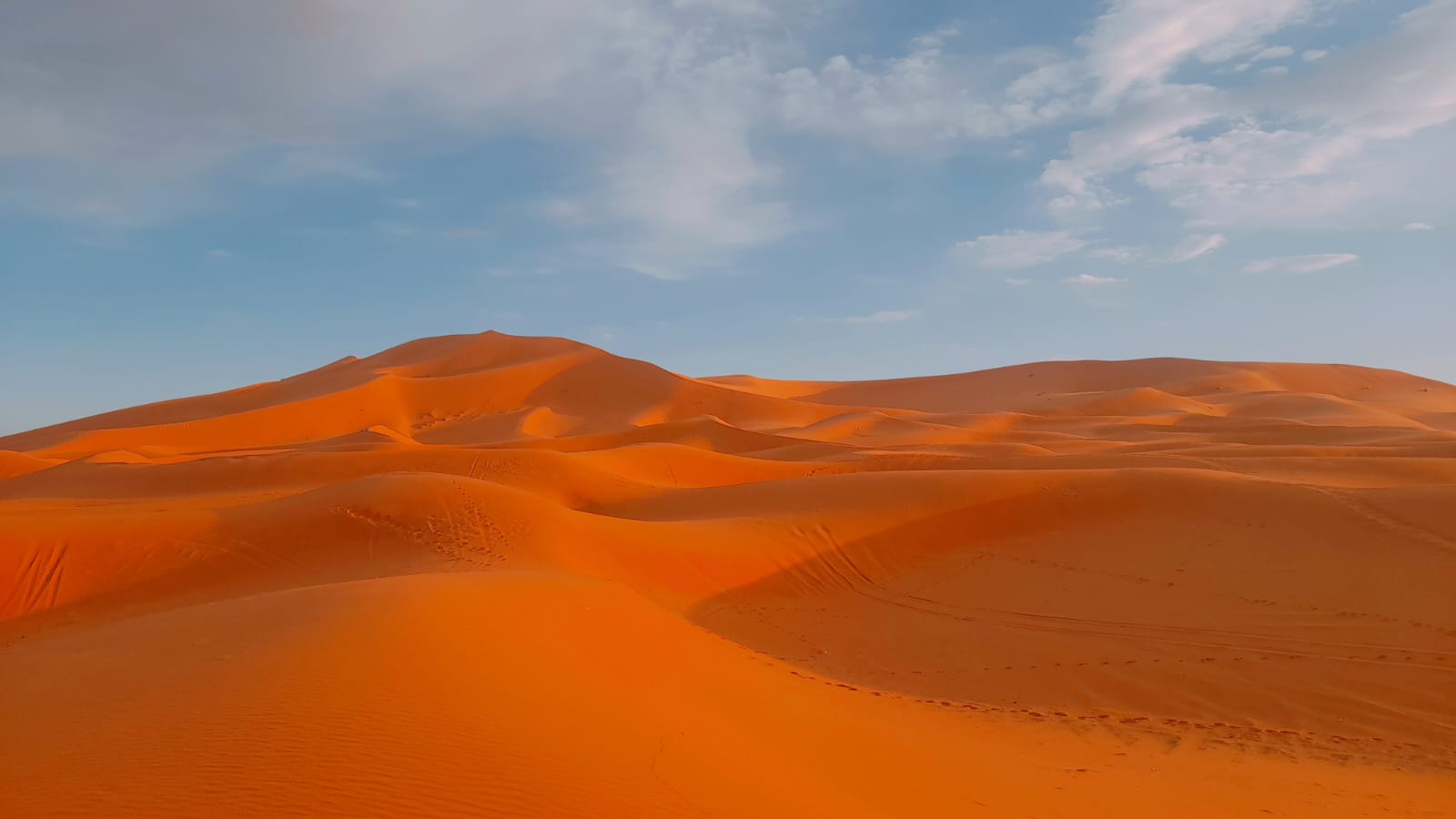
The field of geology is filled with fascinating phenomena, and one such phenomenon that has captured the attention of geologists and nature enthusiasts alike is erg. Ergs are vast expanses of sand dunes that dominate certain regions of the Earth, creating an otherworldly landscape that is both mesmerizing and unique.
In this article, we will delve into the world of erg and uncover 15 astonishing facts that will enhance your understanding of this geological wonder. From their formation and structure to their significance and ecological impact, ergs have a lot to offer in terms of scientific discovery and natural beauty.
So, fasten your seatbelts and get ready for an exciting journey through the intricacies of ergs as we explore their captivating features and the role they play in shaping our planet.
Key Takeaways:
- Ergs are vast, sandy deserts found in different parts of the world, shaped by wind patterns and home to diverse plant and animal life. They have historical significance and can produce unique sand formations.
- Exploring ergs offers breathtaking views of sunrises and sunsets, but requires proper safety measures. These desert wonders have been featured in movies and literature, captivating people with their beauty and mystery.
Ergs are vast desert landscapes.
The first fact about ergs is that they are expansive desert areas characterized by vast stretches of sand dunes. These dunes can reach impressive heights and create an otherworldly and breathtaking sight.
Ergs are found in different parts of the world.
Ergs can be found in various regions across the globe, including the Sahara Desert in North Africa, the Arabian Desert in the Middle East, and the Simpson Desert in Australia. Each erg exhibits its own unique features and characteristics.
The word “erg” is derived from Arabic.
The term “erg” originates from the Arabic word “?irq”, which means “dune field” or “sand sea. It perfectly captures the essence of these massive sand formations that make ergs so remarkable.
Ergs are influenced by wind patterns.
The shape and direction of dunes within an erg are formed by prevailing wind patterns. The constant shifting of sand creates a dynamic environment, with dunes evolving and changing shape over time.
Ergs can have diverse fauna and flora.
Despite the harsh conditions of a desert, ergs can host a surprising variety of plant and animal life. Some plants have adapted to survive in the sandy environment, while certain animals, such as desert reptiles and insects, have developed unique strategies for survival.
Ergs can exhibit different types of dunes.
Within an erg, you can find different types of dunes, including barchan dunes, transverse dunes, and star dunes. These dunes vary in shape and formation, adding to the fascinating landscape of an erg.
Ergs have been featured in movies and literature.
The awe-inspiring beauty of ergs has captured the imagination of filmmakers and writers. Ergs have been depicted in films like “Lawrence of Arabia” and “The English Patient,” as well as in literary works by authors like J.R.R. Tolkien and Frank Herbert.
Ergs can be challenging to navigate.
Due to the constantly shifting sands and the absence of distinct landmarks, navigating through an erg can be extremely challenging. This adds a sense of adventure and discovery for those brave enough to explore these desert wonders.
Ergs can experience extreme temperature variations.
During the day, ergs can reach scorching temperatures, while at night, they can become incredibly cold. These extreme temperature variations further contribute to the harsh and inhospitable nature of these desert landscapes.
Ergs hold historical significance.
Ergs have played significant roles in history, serving as trade routes, battlefields, and areas of exploration. They have shaped the cultures and civilizations that have interacted with them throughout time.
Ergs can produce unique sand formations.
Over time, the grains of sand within an erg can become packed together to form peculiar structures known as yardangs. These elongated formations are shaped by the wind erosion and add to the distinctiveness of ergs.
Ergs can be a source of industrial minerals.
Some ergs contain valuable mineral deposits, such as silica and gypsum. These minerals are often extracted for various industrial purposes, including the manufacturing of glass and cement.
Ergs can emit mysterious booming sounds.
In certain instances, ergs have been known to produce unusual booming sounds. These sounds, known as “singing sands” or “booming dunes,” are still not fully understood, adding an air of mystique to these already captivating landscapes.
Ergs can showcase incredible sunrises and sunsets.
With their vast open spaces, ergs offer breathtaking views of both sunrise and sunset. The interplay of light and shadows on the dunes creates a magical spectacle that photographers and nature enthusiasts cherish.
Exploring ergs requires proper safety measures.
While ergs can be fascinating to explore, it is important to take necessary precautions. Proper planning, sufficient water supplies, and knowledge of the environment are crucial for a safe and enjoyable experience in these remote and challenging landscapes.
These 15 astonishing facts about ergs (geology) illustrate the captivating nature of these desert wonders. From their immense sand dunes to their unique ecosystems, ergs have fascinated people throughout history. Whether you’re planning to visit one or simply appreciate their beauty from afar, ergs offer a glimpse into the awe-inspiring power of nature.
Conclusion
In conclusion, Erg is a fascinating geological phenomenon that has captivated researchers and nature enthusiasts alike. From its unique formation to its ever-changing landscape, Ergs provide valuable insights into the dynamic nature of our Earth. The astonishing facts about Ergs, such as their size, shape, and composition, highlight the incredible forces at work in shaping our planet.Whether it’s the mesmerizing patterns created by wind-blown sand dunes or the rich biodiversity found within these arid environments, Ergs have a lot to offer in terms of scientific discovery and natural beauty. Exploring these vast deserts can lead us to uncover ancient fossils, study climatic changes, and gain a better understanding of how our planet has evolved over time.As we continue to uncover more about Ergs and their significance, it is clear that these geological wonders have much more to offer than meets the eye. So, the next time you come across a photograph or a mention of an Erg, take a moment to appreciate the incredible processes that have shaped these awe-inspiring landscapes.
FAQs
1. What is an Erg?
An Erg is a large area of sand dunes that are formed by wind-blown sand. It is a type of desert environment characterized by the presence of continuous sand seas or fields.
2. How are Ergs formed?
Ergs are formed through a combination of wind, sand, and the presence of a source for the sand. The wind blows loose sand particles into dunes that gradually accumulate and develop the characteristic crescent shape.
3. Where can Ergs be found?
Ergs can be found in several parts of the world, including the Sahara Desert in Africa, the Arabian Desert in the Middle East, and the Great Sandy Desert in Australia.
4. Do Ergs support any form of life?
Yes, Ergs support a surprising amount of life. Despite their harsh and arid conditions, certain plant and animal species have adapted to survive in these deserts, contributing to the overall biodiversity of the region.
5. How do Ergs contribute to scientific research?
Ergs provide valuable insights into various scientific disciplines, such as geology, climatology, and archaeology. They help researchers understand past climatic changes, study the movement of sand, and even uncover ancient artifacts and fossils.
Ergs are truly remarkable geological wonders, captivating adventurers and scientists alike. If you're curious to learn more about the fascinating world of deserts, consider exploring the unique desert ecosystems found in California. For those intrigued by the power of wind and its role in shaping landscapes, delve into the captivating realm of sediment transport and uncover the secrets behind these incredible formations. And if you're eager to expand your knowledge even further, embark on a journey through the mesmerizing world of aeolian processes, where wind, sand, and time intertwine to create breathtaking natural masterpieces.
Was this page helpful?
Our commitment to delivering trustworthy and engaging content is at the heart of what we do. Each fact on our site is contributed by real users like you, bringing a wealth of diverse insights and information. To ensure the highest standards of accuracy and reliability, our dedicated editors meticulously review each submission. This process guarantees that the facts we share are not only fascinating but also credible. Trust in our commitment to quality and authenticity as you explore and learn with us.


